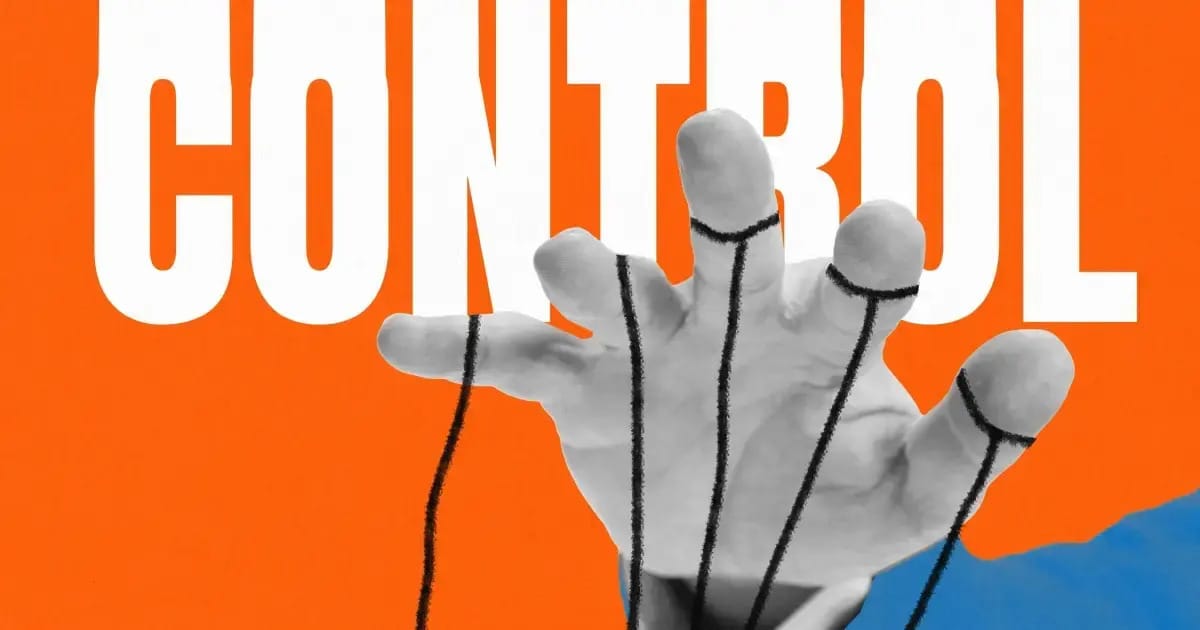- The Option Premium
- Posts
- 🧠 Mental Capital: The Illusion of Control
🧠 Mental Capital: The Illusion of Control
Why Traders Struggle to Let the Market Be the Market

The Illusion of Control
Traders often believe they can control outcomes if they analyze more, tweak more, or trade more. But this mindset can backfire. In this essay, we explore how the Illusion of Control leads to overtrading, poor exits, and emotional decision-making, and what to do instead.
In the 1970s, psychologist Ellen Langer ran a now-famous experiment: participants were asked to buy lottery tickets. Some were handed random ones. Others were allowed to choose their own.
Later, when asked to sell their tickets back, the people who picked their own numbers demanded five times more money.
Same odds. Same lottery. But they felt more in control, and therefore, more certain of winning.
Welcome to the Illusion of Control, one of the most persistent, invisible saboteurs in trading.
The Trader's Version
In options trading, this bias often disguises itself as “conviction.” We tell ourselves that if we do more research, monitor more charts, add more filters, or tweak our strikes a little further, we’ll gain control over outcomes.
But here’s the truth that every seasoned trader learns: We don't control outcomes. We only control process.
That doesn't sound satisfying. But it’s the only mindset that survives across 500+ trades.
Control Is Comfort, Until It Costs You
The market isn’t something to conquer. It’s something to understand. But when traders mistake “understanding” for “predicting,” they start to make critical errors:
Micromanaging winners
(“Let me tighten that stop again…”)Over-adjusting losers
(“If I just roll it once more…”)Jumping from strategy to strategy
(“The iron condor worked last month… but this month?”)
These decisions often stem from a subconscious attempt to assert control, not over the strategy, but over randomness itself.
And randomness doesn’t care how smart you are.
Options Trading Is a Game of Distributions
Every setup you trade, whether it’s a bull put spread on SPY or a PMCC on AAPL, is a probability distribution. It's not a promise. It’s a bet with an expected outcome, not a guaranteed one.
Think of it like blackjack: even if you play a statistically perfect game, you’ll still lose hands. In fact, you may lose ten in a row. That doesn’t mean your strategy is broken, it means you’re playing a game with variance.
But traders caught in the Illusion of Control often misinterpret this variance as a signal to “do something.”
And that’s where edge erodes.
Three Signs You’re Trapped in the Illusion
1. You feel relief when you're “in control,” not when you're following your plan.
If you feel safer just because you added a filter, or “watched the chart all day,” ask yourself, did that action improve your edge? Or just soothe your anxiety?
2. You over-optimize backtests.
This is one of the sneakiest signs of the Illusion of Control: curve-fitting a strategy until the spreadsheet says you're a genius, then wondering why it doesn’t work in real time.
Backtests should illuminate broad principles, not offer the illusion of precision.
3. You change your strategy mid-trade.
This one’s big. It’s the moment when a defined-risk vertical spread somehow morphs into a naked short position… because you “felt” the market was going to bounce.
Process-based traders exit when they’re wrong. Illusion-based traders adjust to avoid being wrong.
How Professionals Break Free
1. Process Over Prediction
This is the foundational shift.
Rather than trying to control the outcome, control what you can:
Setup quality (e.g. IV rank, RSI extremes, skew)
Position sizing
Entry/exit rules
Portfolio balance
Emotional reactivity
When you accept that even your best trades will sometimes lose, you start thinking in batches, not single trades. That’s real control.
2. Write Down the Premise Before Entry
It seems simple. But this one habit alone removes the temptation to rewrite your thesis mid-trade.
If you opened a trade because the IV percentile was in the 90s, don’t convince yourself to hold because “price action looks strong.” That’s not why you entered. Stick to your logic, or you’re just improvising with real money.
3. Use Journaling to Track Emotional Decisions
Many traders document entries and exits. Few document why they did what they did.
Start asking:
“Was this decision part of my plan?”
“What was I trying to control in this moment?”
“Did this action improve my odds, or just make me feel better?”
Over time, you’ll see patterns. And you'll start catching those illusions before they cost you.
Final Thoughts: The Market Doesn’t Owe You Comfort
One of the hardest truths in trading is this: You can do everything right and still lose.
That doesn’t mean you’re bad at this. It means you’re playing a professional game.
The goal isn't to avoid discomfort. It's to stop reacting to it like it’s a problem that needs fixing.
The Illusion of Control is comforting in the moment, but corrosive over the long haul. And every time you try to wrestle certainty from an uncertain system, you pay for it in edge.
Let the market be the market. You’re not here to control it. You’re here to trade it, smartly, systematically, and without illusion.
Probabilities over predictions,
Andy Crowder
🎯 Ready to Elevate Your Options Trading?
Subscribe to The Option Premium—a free weekly newsletter delivering:
✅ Actionable strategies.
✅ Step-by-step trade breakdowns.
✅ Market insights for all conditions (bullish, bearish, or neutral).
📩 Get smarter, more confident trading insights delivered to your inbox every week.
📺 Follow Me on YouTube:
🎥 Explore in-depth tutorials, trade setups, and exclusive content to sharpen your skills.
Reply